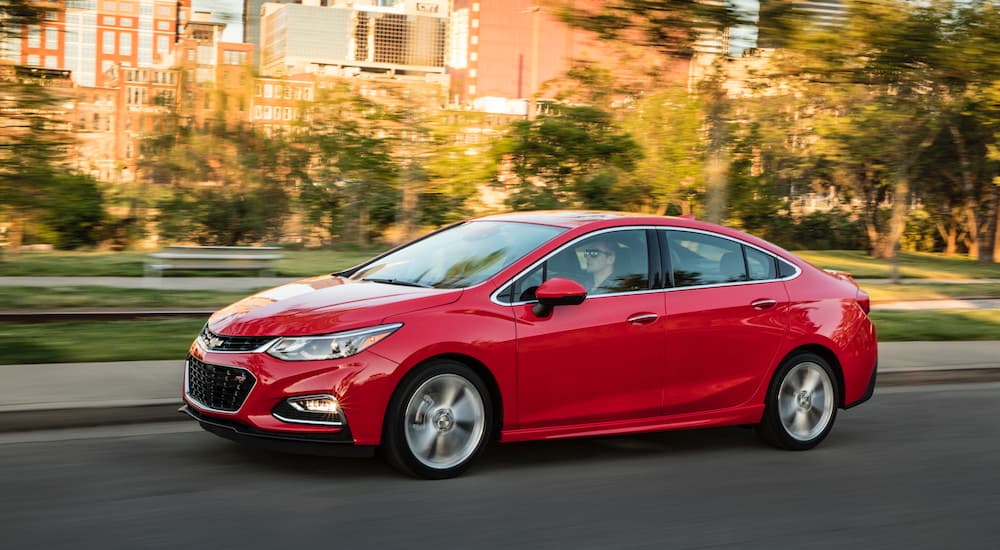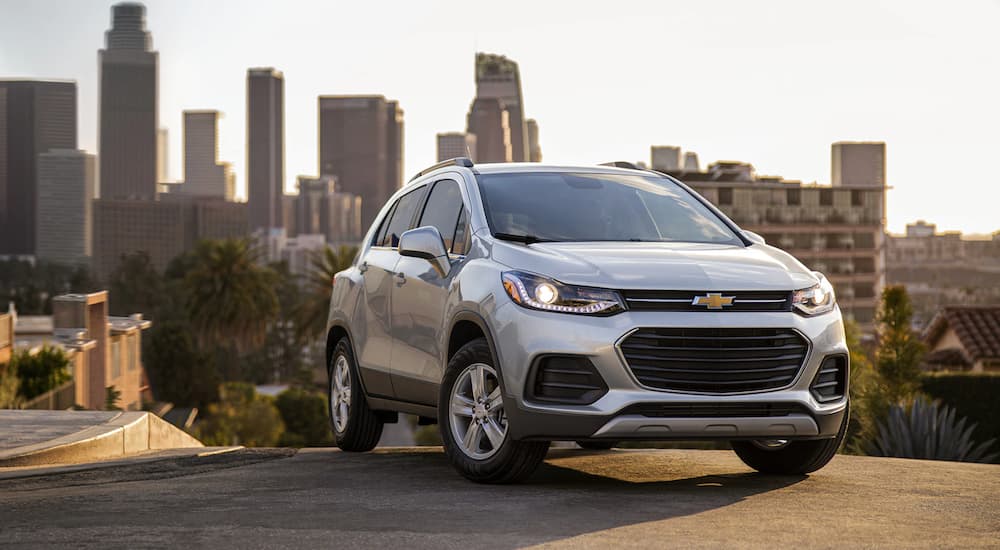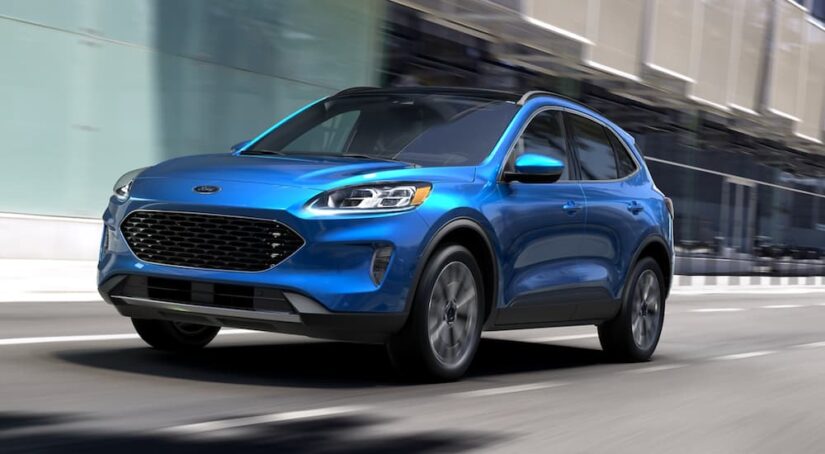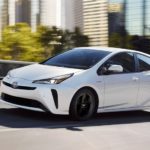So you’re making the big move, huh? Buying a car is exciting, but if you’re a first-time buyer, you’re likely feeling overwhelmed by all of the different things to think about. For starters, there are all the options; if you don’t know exactly what you need or what you’re looking for, looking at the inventory of any given used car dealership may make you feel anxious. There are sedans, crossovers, SUVs, trucks, and even models you may not know how to classify.
Perhaps you click on a car that looks appealing, but then you see the price tag, and your brain starts to hurt; but you see a little note next to the price showing a not-too-outrageous monthly price with a weird acronym, “APR (Annual Percentage Rate).” All of this can easily be discouraging and confusing for first-time buyers. But it’s not as daunting as it may seem. If you approach with the right strategy, you’ll be able to arrive at a peaceful conclusion, driving away in a vehicle you like with a sound financial plan. But part of it requires knowing the vocabulary and understanding how to navigate the industry, so let’s dig into that.
Making a Choice
Making a choice can be difficult when it comes to purchasing a car. For car enthusiasts, it can be hard to narrow down your options from your list of favorites. For those who are simply looking for a vehicle to get from point A to point B, you may not even know how to discern the difference between two different vehicles, making it mighty hard to choose. When it comes to making a sound choice, it’s helpful to start with considering three factors: your budget, your priorities, and your environment.

Make an Assessment of Your Budget
While it’s tempting to put off the budgeting aspect and look at all the exciting models you could have, the argument for making budget the first consideration is to avoid that very temptation. If you don’t establish your budget first, you’ll see a lot of great options, but you may start to get attached to ideas that are realistically not feasible for you. So, first determine your budget, and then look for vehicles which fit within that budget; that way you have the excitement of knowing that everything you’re looking at is a real possibility for you.
When establishing your budget, it’s important not to consider only the total price of the vehicle…unless you’re planning on paying the total price in cash. What you really want to dig into is your loan options. Many dealerships offer loans right in-house, and there’s always the option to work through a third-party bank or credit union. There are different loan terms, often offering options such as 36 months, 48 months, or 60 months—usually, it’s some multiple of twelve, so you’re essentially deciding how many years you want to spend paying it off. The important thing to consider here is that paying it off quickly will free up your monthly budget sooner, but it will come at a higher monthly cost during that loan term. On the other hand, paying it off over a longer period of time helps you moderate your monthly budget as your monthly payments will be lower.
When determining your exact monthly payments, it’s not simply the vehicle’s total price divided by the number of months. There are two important considerations that will affect your monthly payments. First, you’ll want to determine what you’re able to offer as a down payment. While a down payment is usually not strictly necessary, it will go a long way in reducing your monthly prices; anything you can pay upfront will pay off in the long run. Part of the reason for it is that whatever loan amount you’re paying off will have an interest rate attached to it.
This is where that mysterious APR acronym comes into play. APR stands for “annual percentage rate,” which is the annual interest rate you’ll be paying on the loan. So, for any car loan you take out, you’ll owe back the monthly loan plus interest, which will be worked into your monthly payments. Undoubtedly, lower interest rates are always more preferable for any car buyer. Additionally, this is where it can pay to have a shorter loan term. The shorter the loan term, the less interest you’re paying since it is an annual percentage rate. So, regardless of your interest rate, you’ll end up paying less money over time with a shorter loan term; longer terms allow you to have lower monthly payments, while shorter loan terms allow you to spend less money over time.
As you can see, making a down payment, while sometimes being a painful thought, will mean that you are actually spending less money overall because the down payment does not have interest attached to it. After that, you’ll want to find the lowest interest rate possible. While searching for that, you’ll want to inquire about the loan term options and consider whether you’d rather have lower monthly payments for a longer period of time while spending more money overall or whether you’d rather pay it off quickly at a lower overall price.
What Do You Need From Your Next Vehicle?
Now that we’ve gone through the responsible, albeit sometimes boring, part, you can get to the fun part. When determining the model that’s best for you, you want to consider your real needs and priorities: Do you value the driving experience, or do you just need a way to get around? Do you want something big or small? Do you value efficiency or performance? Let’s take three major vehicle types: sedans, SUVs, and trucks.
Sedans are typically what you’d think of when you think of a standard “car.” They’re perfect for drivers who don’t need crazy performance capability or a lot of interior space. With a lot of great hybrid options, these vehicles can be very fuel-efficient, saving you money over time and offering a more eco-friendly solution. If you’re looking to keep costs down and aren’t looking for anything fancy, you can find many highly affordable options with simple interiors. If you’re interested in spending a little more to have some nicer design and tech features, you’ll be able to find great luxury trims as well.
SUVs are often thought of as big truck-like vehicles. While full-size SUVs do offer a large body for those who need it, SUVs actually have a spectrum ranging from compact to full-size. A compact SUV or a midsize SUV is a great option for somebody who doesn’t want anything too bulky, but wants something with a higher level of capability (perhaps more friendly with the elements for outdoor excursions) as well as greater interior space than a sedan would offer. A lot of these compact and midsize SUVs also offer sporty trim options with refined interior design features. As a vehicle class, SUVs tend to be relatively tech-forward, so you’ll be able to choose from a range of high-tech features as well.
Trucks are a bit of a different ball game. One of the most popular vehicle types, trucks are designed to make work and play easier. As such, these vehicles put utility and capability at the forefront. You won’t find more than three rear seats in a truck, so the emphasis is on cargo rather than passengers, as opposed to an SUV. While trucks appeal to a wide variety of drivers, even those who don’t strictly need its capability and utility, you will want to give serious consideration to a truck before making the purchase. While they are certainly exciting vehicles and provide a sturdy ride due to their size and architecture, trucks tend to be more expensive and less fuel-efficient than other vehicle types. If you can find a hybrid option, that will go a long way in making a truck more budget-friendly. With all of that said, trucks are fun to drive, and if you can find one within your budget, you’ll enjoy your ride.

Consider Your Driving Environment
In addition to your personal needs, you’ll want to consider your environment. If you’re living in a city or urban area, a full-size truck is going to be more cumbersome than a sedan. Additionally, fuel efficiency tends to be lower for city drivers than those cruising down open roads, so hybrid options are much friendlier to urbanites as they perform much more efficiently in cities.
On the other hand, those living in rural or suburban areas may have room for a full-size truck or SUV, and even if the fuel efficiency specs aren’t the highest possible, the vehicle will be more efficient overall when not always in stop-and-go mode.
Environmental factors like this do not bar you from purchasing a non-traditional vehicle type for your environment, nor does it mean that it’s even a bad idea; if you live in a big city but spend your weekends escaping the city for camping trips, then a full-size, off-road friendly truck may make sense for you. Similarly, if you live in a rural area but commute to a city for work, a sporty sedan may suit you well. Environment isn’t the defining factor–but it’s something to consider: where do you spend your time, and how will that affect your driving experience (and budget) over time?
Which Vehicle Will Best Suit Your Needs?
Buying a car is exciting; even if you’re not a car buff, people get excited by purchasing a vehicle, even if it’s pre-owned. Our vehicles often serve as landmarks in the stories of our lives, and they can provide a lot of fun and great memories along the way. While it’s important to consider all the factors we’ve discussed—budget, personal needs, and environment—once you’ve done that, the best thing to do is to make a decision with confidence and not look back. There’s always the opportunity to overthink, second-guess yourself, and reconsider; but, if you approach your decision on the foundation of a diligent discernment, you can allow yourself to enjoy your vehicle and not look back.



